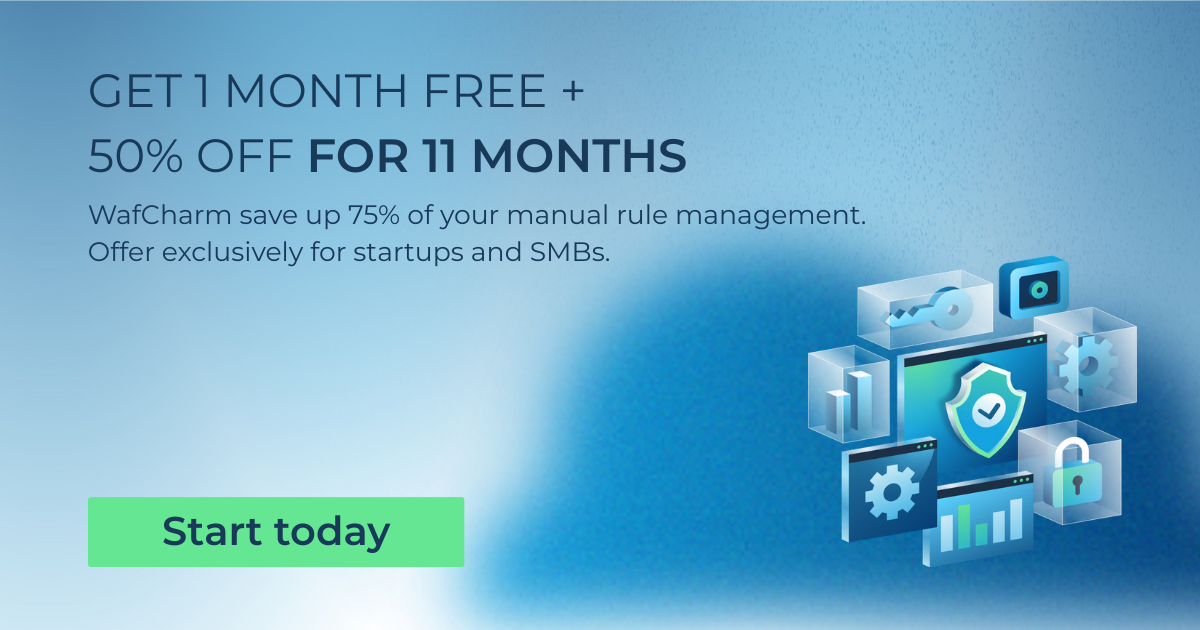If you operate on a cloud platform and managing WAF feels inefficient and resource-draining, it may be time to upgrade from a proxy-based WAF to a cloud-native solution. Discover 3 key signs it’s time to make the switch and what to look for when choosing your next WAF solution.
What is a Web Application Firewall?
A Web Application Firewall (WAF) acts as a security shield between your web application and internet. It filters HTTP/HTTPS traffic at Layer 7, blocking malicious requests and traffic before they reach your infrastructure.
Whether at a startup or global enterprise, a WAF is a key security best practice and often required or recommended for compliance standards like HIPAA, PCI DSS, and SOC 2 in data-sensitive cloud environments.
What Are the Differences Between Proxy-Based WAFs vs. Cloud-Native WAFs?
Proxy-based WAFs, also known as third-party WAFs, operate independently of major cloud providers like AWS, Azure, or GCP. While it provides strong protection, the explicit deployment often requires more effort and can complicate infrastructure, consuming valuable DevOps time.
In contrast, modern cloud-native WAFs are designed for agility and seamless scaling. Built to integrate directly with cloud platforms, it simplifies deployment and provides access to deeper cloud-native insights that proxy-based WAFs typically lack. This approach reduces manual intervention, speeds up response times, and enables security teams to maintain strong protection with less operational complexity.
.avif)
3 Signs It’s Time to Advance to Cloud-Native WAFs from Proxy-based
If your team is still relying on a proxy-based WAF, here are some signs it’s time to move on and advance to cloud-native WAFs.
1. Integration Bottleneck
Integrating a third-party legacy WAF into your cloud platform can become a bottleneck due to complex deployment and the challenge of connecting external tools. Additionally, these legacy systems often limit the number of custom rules you can implement.
2. Unpredictable Costs and Vendor Lock-in
Many proxy-based WAF vendors charge extra for advanced features like API protection or bot mitigation. Vendor lock-in with proxy-based WAFs often results from their deep integration with proprietary edge services. This means, your team can be tied to a specific vendor, which will limit flexibility in both operation and reporting, while also increasing management overhead.
3. Lack of Dedicated Customer Support
Proxy-based WAF vendors often treat the WAF as just another tool in a larger product suite, rather than a core security solution requiring active management and support. As a result, customers are left with limited guidance, slow response times, and generic support that lacks deep WAF expertise.
From Manual Overload to Automated Security: Cloud-Native WAF in Action
An international travel company migrated from a private cloud to AWS and adopted AWS WAF for its native integration and cost-effectiveness. However, they faced significant WAF operational challenges maintaining strong security with limited internal resources. To address this, they adopted WafCharm, Cyber Security Cloud’s cloud-native WAF solution.
With WafCharm’s automated IP blocklist feature and continuous rule updates, the company significantly reduced both time and cost associated with WAF management. They also benefited from responsive customer support by Cyber Security Cloud, which helped them fine-tune and create custom rules tailored to their environment.
By combining automation, detailed reporting, and dedicated expert support, the company strengthened its security posture while migrating to AWS and dramatically lowering operational overhead.
Why You Should Choose WafCharm:
WafCharm is purposely designed to solve the limitations of legacy WAFs by bringing data-driven automation, cost-flexibility, and time-efficiency to your AWS WAF operations.
With WafCharm, you get:
- Automated rule management to free up cost, time, and resource
- Custom rules and optimization based on real-time threat intelligence
- Seamless integration with cloud-native platforms like AWS
- Predictable pricing without surprise add-ons for critical features
- 24/7 dedicated customer support to align WAF management meeting with your security goals
Learn more about WafCharm.
Start Your Security Journey Here
Get started with a 30-day free trial and 11 months 50% off of the full WafCharm solution.





.png)